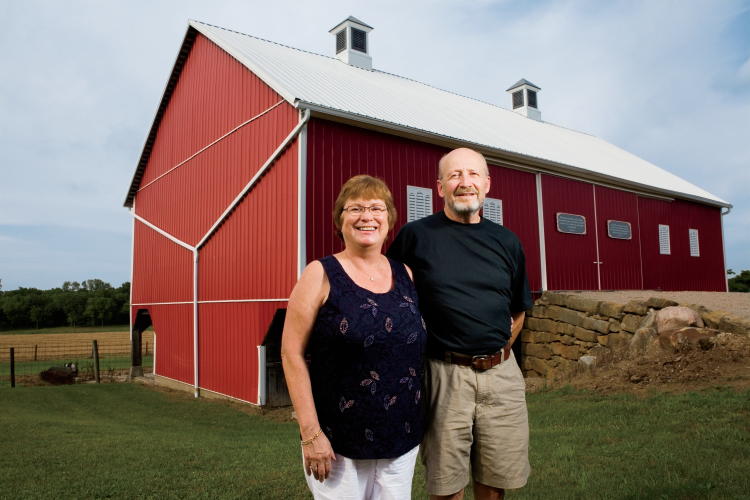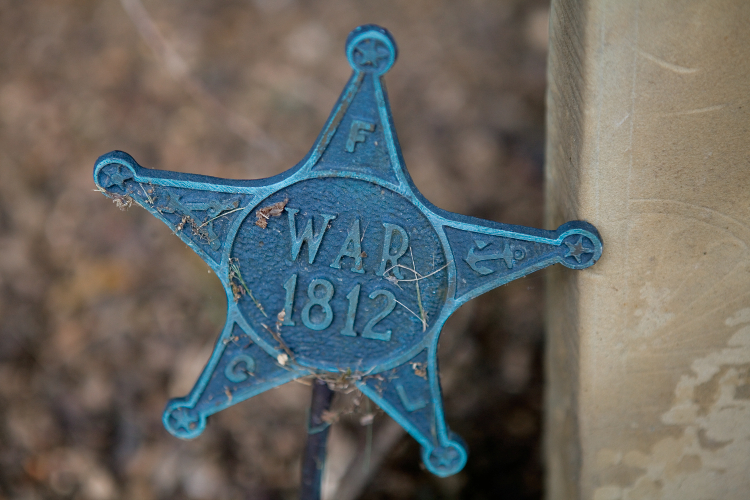Home > Ohio > Ohio Farm to Table > Ohio’s Founding Farm Families
Ohio’s Founding Farm Families
In partnership with: Ohio Department of Agriculture
From the front porch of his 1830s farm house in Baltimore, Ohio, Steve Miller can see the gravesites of his ancestors Andrew and Ulrich Wagner, who grew corn and wheat two centuries ago on the same 450-acre farm he owns today.
Along with his wife, Debbie, and grown sons, Seth and Noah, Miller operates one of Ohio’s bicentennial farms, which have been owned by the same family for at least 200 years.
More than 1,000 Ohio farms are registered with the Ohio Department of Agriculture as a century farm, the designations for remaining in the same family for at least 100 years. Only 65 have achieved biocentiennial farm status.
“I walk around some of these old buildings, and I wish they could talk,” Miller says. “I’m sure they could tell a lot of stories.”
Miller’s farm has three barns built between 1850 and 1870, a two-story log house built circa 1820, a smoke house and summer kitchen built around 1885, and the home Miller lives in, which was originally built in 1830 with additions in 1885 and 1918. Miller’s ancestors arrived in Baltimore in 1803 from Germany and purchased the farm in 1806.
“They were very resourceful with the land,” Miller says. “They grew corn, wheat and hay, and they planted fruit trees – largely apple – and that became one of the early enterprises of the farm. They made apple butter, apple cider and apple cider vinegar to sell, and they tapped maple trees for making maple syrup.”
The family also raised cattle, sheep and hogs, bred Percheron work horses to sell, and planted black locust trees, from which they sold fence posts. Miller bought the farm from his great uncle in 1973 and today grows soybeans, wheat and corn on the property.
“I take our farm’s heritage seriously, because if previous generations hadn’t taken proper care of the land, it wouldn’t have sustained itself this long,” Miller says. “There’s an old saying that says, ‘If you take care of the land, it will take care of you.’ ”
Cindy Shy, manager of the Century and Bicentennial Farm Program for the Ohio Department of Agriculture, says it is important to recognize century and bicentennial farm families because of their countless historic, social and economic contributions to Ohio and the agriculture industry as a whole.
“The founding families endured unimaginable hardships and risks to settle their farms,” Shy says. “Their pioneering spirit forged the strong foundation of today’s food and agriculture industry, which not only supports our economy, but continues to provide food, clothing and shelter for everyone.”
The oldest registered Ohio bicentennial farm is located in Adams County and dates back to 1772, when King George III deeded more than 500 acres to family patriarch Alexander Smiley. It is the only Ohio bicentennial farm established prior to our nation’s independence, and it continues in the Smiley family today.
“What many people don’t realize is that these farms were also some of the first businesses in the state,” Shy says. “The crops and livestock they raised were sold or traded to sustain the state’s budding city-centers. Two hundred years later, these same family-owned businesses are still operating and are still a vital part of the fabric of our rural communities.”
Families like the Millers have had to adapt over the past two centuries to save their farms, keeping up with new technologies and specializing in certain areas to survive economically. Steve and Debbie have also had to supplement their income by working off-the-farm jobs.
While agriculture continues to change, the Millers are certain of one thing – their land will forever be used for agriculture. In 2003, they placed it under a conservation easement that legally ensures it will only be used for agriculture in the future, not developed for residential or commercial use.
“I’m very mindful that we are just temporary residents of this land, so we aim to be the best stewards of it possible for the time God has allowed us to live here,” Miller says. “We will eventually pass on, but we hope to see the land’s legacy continue with future generations.”






